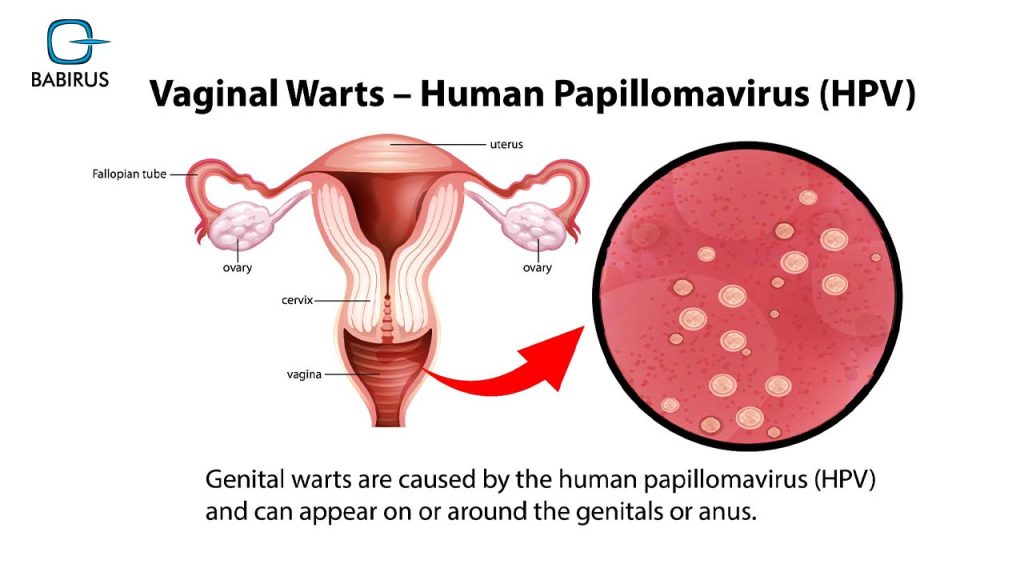Understanding HPV: Symptoms, Causes, and Treatments Explained

The human papillomavirus is a widely spread infection that impacts the lives of men and women all over the world with more than 200 types causing various health problems, including genital warts and certain types of cancers.
Moreover, the human papillomavirus is the most prevalent sexually transmitted infection worldwide, with millions of new cases reported each year.
In this article, we are going to share with you a comprehensive overview of HPV, including its causes, symptoms, prevention strategies, and available treatments.
What is HPV? An Overview of the Virus and Its Risks
Human Papillomavirus (HPV) is a common sexually transmitted infection that affects both men and women with over 200 related viruses that can infect the human skin and mucous membranes.
These viruses are classified into two main categories:
- Low-risk types are usually responsible for the formation of benign warts.
- High-risk types are associated with an increased risk of developing cancers, particularly cervical, anal, and oropharyngeal cancer.
Recognizing HPV Symptoms: Key Signs to Know
Most people who are infected with human papillomavirus do not show any symptoms, and the virus goes away on its own, meanwhile, in some cases, HPV can lead to various health issues depending on the type of HPV and the affected part of the body.
1. Identifying Genital Warts from HPV
One of the most common symptoms of low-risk HPV is the development of genital warts, that can appear on the genitals, anus, or in groin area.
Genital warts shapes differ as they may be small, flat, and skin-colored, or they may be raised, bumpy, and fleshy, moreover, they can occur singly or in clusters and may resemble cauliflower, warts, or bumps.
Furthermore, in some cases, warts may itch or cause discomfort during sexual intercourse.
2. Cancer Risks Linked to HPV
Some high-risk types of human papillomavirus infection can cause cancer, however, this will differ based on gender:
- In women, high-risk HPV types can lead to cervical cancer, and the symptoms of cervical cancer may include abnormal vaginal bleeding, unusual discharge, pelvic pain, and swelling or leg pain.
- In men, high-risk HPV types can cause penile cancer, which may present as a sore or growth on the penis that does not heal, bleeding, or a change in the color or texture of the skin on the penis.
- In both men and women, high-risk HPV types can cause anal cancer, which may cause rectal bleeding, pain or discomfort during bowel movements, and changes in bowel habits.
3. Head and Neck Cancer: The Impact of Human Papillomavirus (HPV)
High-risk human papillomavirus types can also cause head and neck cancers, such as oropharyngeal cancer, which affects the back of the throat, including the base of the tongue and tonsils.
Symptoms may include:
- Sore throat that does not go away.
- Difficulty swallowing.
- A lump in the neck.
- Changes in the voice.
4. Other Symptoms of Human Papillomavirus (HPV) Infection
In some cases, human papillomavirus can cause recurrent respiratory papillomatosis, a rare condition in which warts grow on the voice box (larynx) and can cause hoarseness or breathing problems.
How HPV Spreads: Causes and Transmission
Human Papillomavirus (HPV) is primarily transmitted through:
- Direct skin-to-skin contact, commonly through sexual activity.
- Through genital, oral, or anal contact with someone who is infected.
- Transmitted from mother to baby during childbirth.
- HPV can be spread through non-sexual contact, such as touching an infected area and then touching another part of the body.
Modes of Transmission for Human Papillomavirus (HPV)
There are various ways human papillomavirus can be spread and the importance of understanding these transmission methods to prevent infection:
· Sexual Contact: The Main Mode of Human Papillomavirus (HPV) Transmission
Sexual contact is the most common method of human papillomavirus infection, as during any form of sexual activity, including vaginal, anal, and oral sex, the virus can be transmitted from one person to another through skin-to-skin contact.
Moreover, the human papillomavirus can be present in the genital area even when there are no visible signs of infection, making it possible for individuals to unknowingly spread the virus.
· Non-Sexual Contact: Unconventional Modes of Human Papillomavirus (HPV) Transmission
While sexual contact is the most common mode of transmission, HPV can also be transmitted through non-sexual contact when a person comes into direct contact with a wart caused by HPV.
For example, touching a wart on someone’s hand or foot can result in the transmission of the virus, or through shared personal items, such as towels or clothing, if they come into contact with a wart.
· Vertical Transmission: The Risk of Mother-to-Baby HPV Infection
Although this is a rare human papillomavirus transmission, yet, it is possible for a mother with an HPV infection to pass the virus on to her baby during the birthing process.
This mode of transmission is particularly concerning because it can lead to the development of juvenile warts or increase the risk of cervical cancer in females.
· Blood Transfusion: A Rare Mode of Human Papillomavirus (HPV) Transmission
While uncommon and the risk is extremely low, yet, HPV could also be transmitted through blood transfusions, as blood screening practices have significantly improved in recent years.
However, it is still essential to be aware of this potential mode of transmission, particularly for individuals with compromised immune systems.
Diagnosing and Testing for Human Papillomavirus (HPV)
There are several diagnostic tests available to detect HPV infections, however, they can generally categorized into two groups:
HPV DNA Tests: Analyzing Genetic Material for HPV Detection
These tests involve the collection of cells from the infected area, which are then analyzed for the presence of HPV DNA, and the most common HPV DNA test is the Hybrid Capture 2 (HC2) test, which is used to detect high-risk HPV types responsible for cervical cancer.
HPV Antibody Tests: Assessing Immune Response to HPV Infection
These tests measure the presence of HPV-specific antibodies in the blood, moreover, the most widely used antibody test is the Eberle test, which detects the presence of HPV-16 and HPV-18 antibodies, the two high-risk types most commonly associated with cervical cancer.
HPV Testing Procedures: From Pap Smears to Biopsies
The specific testing procedures vary depending on the type of HPV diagnostic test being used.
Cervical Cancer Screening:
Healthcare providers typically perform a Pap test for cervical cancer screening, which involves collecting cells from the cervix, in addition to the Pap test, healthcare providers may also perform an HPV DNA test to detect high-risk HPV types.
Anogenital Warts:
For the diagnosis of anogenital warts, a healthcare provider will visually examine the affected area. If necessary, a biopsy may be performed to confirm the presence of HPV.
Head and Neck Cancer:
For head and neck cancer screening, healthcare providers may perform an HPV DNA test on cells collected from the back of the throat or mouth.
Other HPV-Related Conditions:
For other HPV-related conditions, such as anal cancer, healthcare providers may perform an anal Pap test or an HPV DNA test on cells collected from the anal area.
Treatment Options and Vaccines for HPV Prevention
In recent years, important advances have been made in the development of treatments and vaccines for human papillomavirus.
Treatment of HPV: Targeting Warts and Preventing Complications
The treatment for HPV depends on the type of infection and the severity of the symptoms. For benign warts caused by HPV, several treatment options are available, including:
Topical treatments:
Creams or ointments containing salicylic acid, imiquimod, or podofilox can be applied to the warts to help remove them.
Cryotherapy:
This treatment involves freezing the warts with liquid nitrogen to destroy the affected tissue.
Surgical removal:
Warts can be removed through minor surgical procedures, such as laser therapy, electrosurgery, or surgical excision.
Immune-boosting therapies:
Some patients may benefit from immune-boosting treatments, such as interferon injections or the injection of a vaccine derived from the patient’s own immune cells.
For more severe cases of HPV, such as cancers caused by the virus, treatment options may include:
Surgery:
Based on the cancer’s stage and location, surgery may be performed to remove the affected tissue.
Radiation therapy:
High-energy rays are used to destroy cancer cells and shrink tumors.
Chemotherapy:
Drugs are used to kill cancer cells or slow their growth.
Immunotherapy:
This treatment boosts the body’s immune system to help it fight cancer more effectively.
Available HPV Vaccine: Protecting Against High-Risk HPV Types
The development of HPV vaccines has revolutionized the prevention of HPV-related diseases. Currently, there are three HPV vaccines available:
Gardasil (Merck):
This vaccine guards against 4 HPV types (6, 11, 16, and 18) and is approved for use in males and females aged 9-45 years.
Cervarix (GlaxoSmithKline):
This vaccine protects against 2 HPV types (16 and 18) and is approved for use in females aged 10-45 years.
Gardasil 9 (Merck):
This is an updated version of Gardasil, offering protection against 9 HPV types (6, 11, 16, 18, 31, 33, 45, 52, and 58). It is approved for use in males and females aged 9-45 years.
Vaccination is maximum effective when administered before exposure to human papillomavirus, ideally between the ages of 11 and 12, however, it can still be given to older individuals, up to the age of 45, depending on the country and local guidelines.
Finally,
Human papillomavirus (HPV) is a common sexually transmitted infection that can lead to various health issues, including genital warts and certain types of cancers.
Preventive measures such as early detection, vaccination, safe sexual practices, and regular screenings play a crucial role in reducing the spread and impact of HPV.
Early detection and appropriate treatment can help manage the symptoms and prevent complications associated with HPV infections. Get tested today! Call us for more info.

